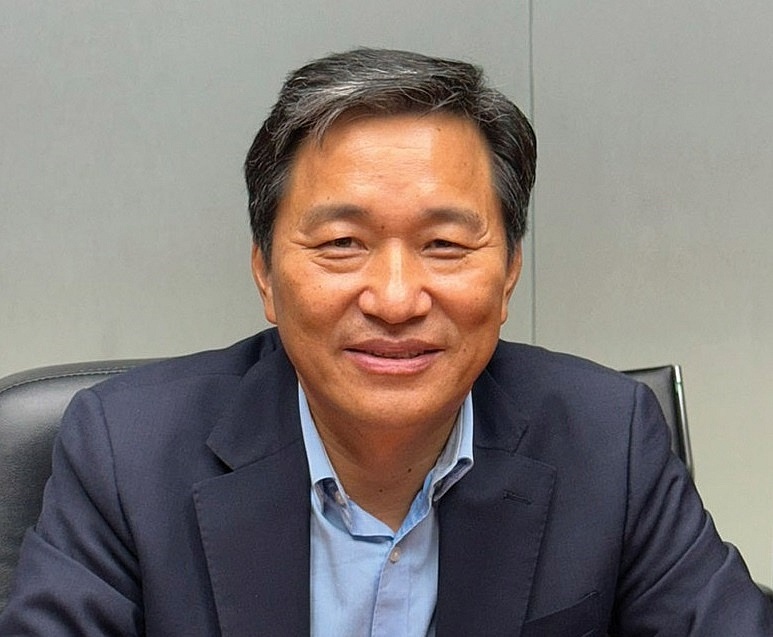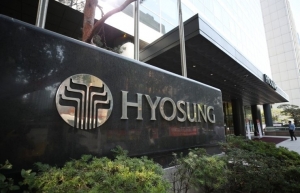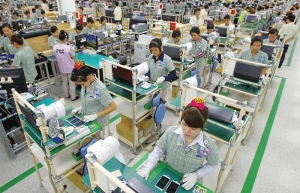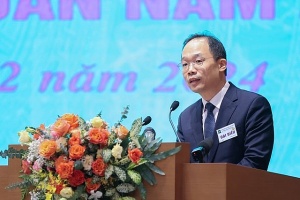Only way is up for Vietnam’s high-tech manufacturing
 |
| Ko Tae Yeon, general director of Heesung Electronics Vietnam |
You have lived and worked in Vietnam for 14 years and help set up LG Electronics before moving onto Heesung Electronics, which is supplier for LG Display. What factors impress you in Vietnam’s investment environment?
Heesung Electronics Vietnam officially started operations in 2018. Our company is a South Korean-invested business and specialises in manufacturing audiovisual products for cars and back covers for OLED televisions.
As many investors will tell you, Vietnam is a strong location place, not just geographically or geopolitically. The government takes part in many activities to promote free trade agreements with many countries. Vietnam is the number one in Asia countries in terms of number of such agreements.
The domestic market also has big potential in terms of the population and the younger generation specifically.
In the case of the northern port city of Haiphong where we are based, foreign-invested enterprises investing in this city mainly export via sea and not by air. So, one clear comparison is that Samsung is in the northern province of Bac Ninh and LG is in Haiphong.
At Samsung, its main product is mobile phones so it needs to be located closer to an airport. Meanwhile, LG’s main products in previous times were washing machines and televisions, and now car components, which are mainly exported by sea.
Haiphong has a complete logistics system, thus many exporters are coming to this city. Along with the convenient seaport system, the city’s leaders also pay attention to promotion activity to attract foreign investors.
How much time did your company take to select Vietnam as the best place to set up the facility, and what are Heesung Electronics’ plans to expand its operation in Vietnam?
I was the leader of the Heesung Electronics project and we took more than a year to select the country at first. At the time, we analysed the pros and cons of Vietnam, Thailand, Indonesia, and Myanmar. We compared the population, government policy, business environment, and infrastructure, and then it was obvious that Vietnam was the place to be. And I know that many other foreign-led businesses like ours are doing that kind of feasibility study currently.
In terms of expansions, we cannot share too much at this time as we are still in negotiations, but many manufacturing bases are moving from China to Vietnam and the trend will continue. So I think many opportunities will be here, and our company is still trying to expand them more. In the short term, we can commit to investing more in Haiphong.
How can Vietnam attract more high-tech investors?
Vietnam has plans to engage many investors but has yet to offer enough attractive incentive programmes. The government has to very seriously consider this, especially nowadays because of the global minimum tax issue.
The South Korean government offers a tax incentive programme for enterprises if they are training workers. The Vietnamese government has emphasised the importance of training activities, especially for young students, but the mechanism has yet to be strong enough. Government policies in general are okay, but in detail, the government should pay more attention to specific activities.
Can you share any detailed proposals in this vein?
The government must pay attention to supporting young engineers. It should support the universities that are trying to recruit and train engineers, for example giving four-year scholarships to engineers. Training and education needs to have a long-term vision. Especially, Vietnam should focus on supporting students who are studying hard to give them have opportunity to study even more.
I see that many Vietnamese youngsters would like to work in the customs, police, and military. Unfortunately, this situation will not contribute to helping the country promote the manufacturing sector and pull in enough high-tech capital. The young generation should be encouraged to look into business more. Vietnam’s future fully depends on the young generation, so if they do not have a global mindset and economic knowledge, how can they make the manufacturing industry grow?
Meanwhile, many say that foreign-invested companies do not share enough in terms of technology, which is not correct. If Vietnamese engineers understand fully, they can more easily receive and embrace tech transfer. Many foreign investors want to offer this, but not enough engineers can take it on.
In addition to education being crucial, the government should continue to reform policies and complete the infrastructure to help foreign investors in putting capital into the country.
 | Hyosung Group unveils $720 million investment in Vietnam Hyosung Group, a South Korean industrial conglomerate, has announced plans to invest $720 million in a biotech fiber manufacturing plant in Vietnam. |
 | South Korean giants expand investment in high-tech sphere South Korean groups are seeking to reinforce their footprints in a wide range of green and high-tech ventures in Vietnam. |
 | South Korean diplomat outlines strategies to enhance Vietnam's stock market In a conference on February 28 to outline the objectives for the development of Vietnam's securities market in 2024, Sang Key Yoon, Commercial Counsellor at the Embassy of South Korea in Vietnam, detailed a vision for bolstering the Vietnamese stock exchange. |
What the stars mean:
★ Poor ★ ★ Promising ★★★ Good ★★★★ Very good ★★★★★ Exceptional
Related Contents
Latest News
More News
- Kolon signs $48 million airbag supply deal with Autoliv (December 15, 2025 | 18:14)
- National Assembly approves Vinh–Thanh Thuy expressway project (December 15, 2025 | 18:02)
- Quang Tri green-lights $1.59 billion LNG-fired power project (December 15, 2025 | 17:59)
- Stress laid on high-quality FDI inflows (December 15, 2025 | 11:00)
- Can Tho utilises its growth advantages (December 15, 2025 | 09:09)
- Ca Mau unlocking potential to shape a more sustainable future (December 15, 2025 | 09:02)
- Major projects to be inaugurated nationwide (December 15, 2025 | 08:00)
- MoF workshop highlights mounting concerns over ODA on-lending costs (December 12, 2025 | 16:05)
- National Assembly approves pilot mechanisms to accelerate major projects in Hanoi (December 12, 2025 | 11:29)
- Legislation gives government flexibility for loan guarantees (December 11, 2025 | 18:04)

 Tag:
Tag:





















 Mobile Version
Mobile Version